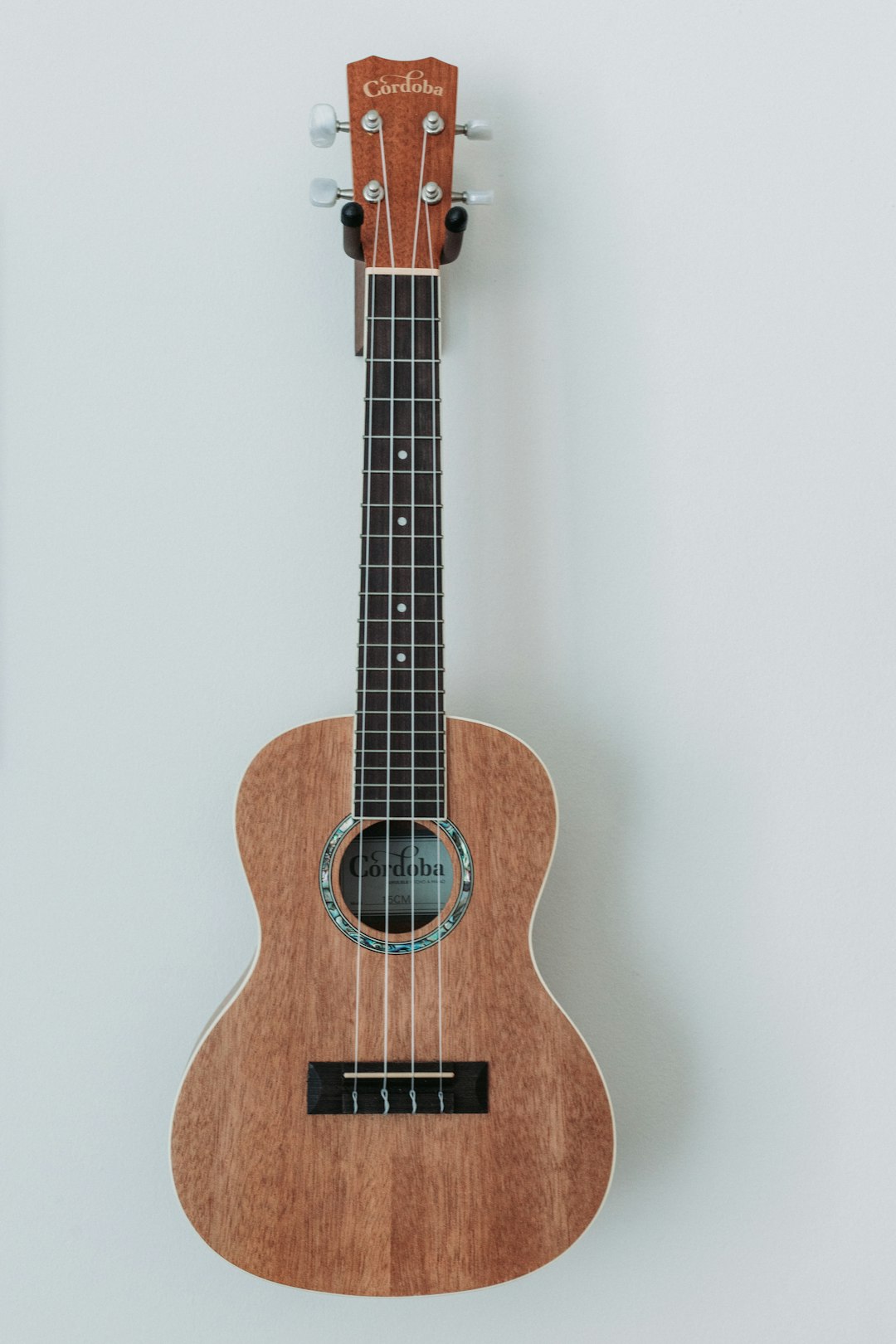How long does it take to learn guitar?
NewsHow long does it take to learn guitar?
If you’re reading this, you are either looking to start learning how to play the guitar or can’t seem to understand why it is taking you so much time to master some chords. If in search of being the next groovy Eric Clapton, be ready for years of practice, and chord perfection. Yet for those beginning their guitar lessons, no need for insane guitar skills, with only a few weeks you should be able to play simple and cool tune around a campfire. Playing guitar, like with any instrument, is a skill that demands time and dedication but the benefits much outweigh the effort. When starting to play guitar it is important to note that nothing comes easy and the end result isn’t the same for everyone. It goes without saying that there isn’t a simple answer to “how long it takes to learn guitar”. It’s all quite subjective as it will be different from one person to the next. There are different factors that come into play when determining whether you can learn this new skill.
You must have a strong habit of practicing regularly, and most importantly be determined to take on the challenge. Without these, the consistency of your practice will fall short and progress will appear slower and perhaps disappointing. When embarking on this journey expect nothing to be easy but with practice and review your guitar will more than likely become an amazing companion and unquenchable source of delight for you and your friends.

Developing a Weekly Plan
Planning is a foundational pillar of the organized student. In the same that you would make a plan for your day, making a plan for your guitar learning will help visualize your commitment and progress. With a habit of planning each lesson and objectives, you will steadily advance and avoid the pitfalls of stop & go learning. Learners typically find that improvement is seen quicker with a steady approach. For those who have never held or heard a guitar, the learning may seem, in the very beginning, as complex as learning a new language. So how much should you practice per week? Thankfully, its a fairly simple answer: every day of the week. As a beginner, your goal should be close to 15-20 minutes a day. After a few weeks of training, when the fundamentals have been acquired, you will be able to increase your daily practice time to 30 minutes or more. The best way to ensure your success is to create a calendar with a dedicated practice time for every day of the week. A guide is provided below for you to follow:

Some examples of what you will practice are:
- Chords
- Scales
- Theory
- Jamming
- Strumming
- Warmup Exercises
- New Song
- Other
This guide will become a trusted partner and help you maintain a strong and focus. Now let’s dive into some ways to learn specific techniques on your path to becoming a guitar pro in a matter of weeks.
How to effectively spend your time on Cords and finger-style
For many students or practitioners, the hardest part is keeping up with their weekly plan. Don’t overdo it! Like many exercises that demand practice, starting off too strong can delay or weaken your learning. The most effective way to practice your chords and finger-style will require a step by step method. During the first 4 weeks, focus on the basic finger exercises and learn the open chord shapes. During the following 7 weeks in you should concentrate on fingerpicking exercises and their patterns. Over time you will layer in the strumming chord progression. After 11 weeks you will have mastered the chords and be able to sing and play to the music. Finger-style will demand a bit more time to fully master.
Reaching that skill will allow you to play patterns and adapt basic songs to your own finger-style. That level of guitar knowledge and skill will typically take you about 9 months. Of course, learning capability and speed varies from person to person, particularly as each learner’s goals may vary. Some may want to become professionals while others may only look to play the basics. The only difference is the time it will take to reach your goal, but both of these goals are reachable with practice. Once you have reached a solid comfort level with the cords and finger-style it will be time to consider your next milestones on your journey to becoming a master of the ax.

Timeline of Guitar learning and accomplishments
Some work by objective. Others are lifelong learners. Some aren’t really sure how long they are in it for, as long as they are in it for the fun. To bake in a little perspective in this picture, it might be useful to speak to the various incremental stages of guitar learning, assuming, as always, a solid work habit and regular practice. Each of the following stages comes with its own set of benefits and rewards, from year 1 to year 20 of the learning process, from the easy singalongs to true guitar master. With a weekly practice these are the possible stages and your likely achievements::
1-3 months
By the end of these few months, you should have reviewed and learned the open and basic chords such as A, E, G, Am, Em, Cmaj7, Dsus2. These simple open chords should help you play easy guitar songs and jump into single string plucking or chord arpeggios.
6-9 months
The difficulty of the songs you are now playing has jumped up a notch as they incorporate hammer-ons or pull-offs. Not to forget that your finger calluses are going to show after learning the new C and D chords.
1 year
You will be able to play intermediate songs and venture into a greater number of genres. You may not yet be the pro to play any solo, but your skill will now really start to show.
2 years
After two years of incremental content and practice, you should be able to master most songs that will come your way and be equipped to enter the hardest and final stages, barre chords. These may be frightening to conquer but they will open the doors to a whole new musical universe and break what you previously perceived as limits to your insane guitar skills.
3-4 years
Leveraging from the previous learnings on guitar theory and barre chords it will know be time to look into the themes of transition and improvisation. Your goals should be set on playing these with as much ease as your open chords.
5-7 years
At this stage, you have earned the title of professional. With your talent, you may want to try to branch out into other types of guitars for new sounds. Dive into the many subtypes of electric guitars or acoustic guitars, you may find one that fits not only to your style but also your love of a specific music genre.
It may be daunting to think of 4 years before you can master the guitar but every guitar player, from your neighbor to Eric Clapton was a beginner at some point in their life. If you ever get discouraged on your journey, remember that people such as Steve Vai, Van Halen, or Slash were not born guitar gods, they were once like you. If there is one thing you can be certain of, it is that they have reached guitar mastery with years of learning, intense determination, and without shortcuts. For example, Slash, who was once known as Saul Hudson, the lead guitarist in Gun and Roses, had a quite humble beginning with a one-string flamenco guitar. Like the rest of them, he earned his way to becoming the Mad Hatter we know today.
Tips and shortcuts
One helpful tool to improve your learning experience is to quickly identify your time-wasters and kick them to the curb. It will be all too frustrating to spend more time than you have to in practicing the same techniques or chords for more than a month. To ensure your success, here are some of the things that you may want to remember before opening the doors to the world of guitar:
Choosing the guitar lessons that are right for you will make a world of a difference in the pleasure you take learning this instrument, and therefore, the speed at which you will acquire new abilities. Plenty have turned to the Youtube videos or even free apps, however, so many of these sites lack the straightforward direction to follow. It is key to chose a well-thought-out framework of training.
Choosing the wrong guitar can’t be a mistake to make. There are thousands of guitars in the world with each of their sound and style, and each with a different level of difficulty to master. The best guitar to use as a beginner might just be a steel ringed acoustic guitar. A nice and smooth guitar that doesn’t need too much equipment to function and creates nice and easy sounds.
When setting up your goals make sure that you don’t set yourself a challenge you can’t meet. Make it attainable with effort, but don’t stretch yourself too thin. One step at a time and in a matter of months the preceding stages will seem a piece of cake.
A final tip for those who aren’t big fans of long-term commitment or tend to fall in the short attention span category is to have your guitar become a visible companion in your living room. Whether this visual will remind you that you always have time for a little music practice or whether your guests ask you to play a tune for them. And don’t forget to buy a guitar case. No excuse to leave town without your guitar. The best thing you can do to make sure that you will never make practice a burden is to buy a bag to have the guitar portable but also position near you at all times and at arms reach.
In conclusion, the amount of time it will take to reach your desired skill level in guitar playing will depend on the effort you put in… surprise surprise. The fundamental premise of music learning is the acknowledgment that with a strong practice habit your journey will be shorter, happier, and worthwhile. Setting multiple, smaller, and incremental goals along the way can keep the frustrations at bay. Keep up the momentum and determination and your results will be astonishing to you and reverberate with a multiplier effect to those musically enclined around you.
Here, you can CoachGuitar which is the fastest way to learn guitar, Try it !
You only need to remember 5 colors. Learning the guitar through fun, with simple goals that can be reached and accessible to everyone, is the best way to create a click in the learner
Written by noam
on 2020-07-13 14:13:31
Keep reading



The Guitar: One of the Major Figures in the Iconography of Pablo Picasso
The Guitar: One of the Major Figures in the Iconography of Pablo Picasso








